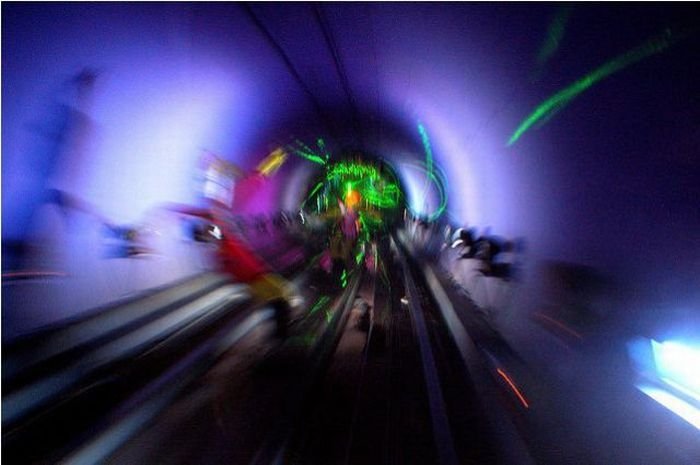|
|
The Bund Tunnel, Shanghai, China
|
By the 1940s the Bund housed the headquarters many, if not most, the major financial institutions operating in China, including the "big four" national banks in the Republic China era. However, with the Communist victory in the Chinese civil war, many the financial institutions were moved out gradually in the 1950s, and the hotels and clubs closed or converted to other uses. The statues colonial figures and foreign worthies which had dotted the riverside were also removed.
In the late 1970s and early 1980s, with the thawing economic policy in the People's Republic China, buildings on the Bund were gradually returned to their former uses. Government institutions were moved out in favour financial institutions, while hotels resumed trading as such. Also during this period, a series floods caused by typhoons motivated the municipal government to construct a tall levee along the riverfront, with the result that the embankment now stands some 10 metres higher than street level. This has dramatically changed the streetscape the Bund. In the 1990s, Zhongshan Road (named after Sun Yat-sen), the road on which the Bund is centred, was widened to ten lanes. As a result, most the parkland which had existed along the road disappeared. Also in this period, the ferry wharves connecting the Bund and Pudong, which had served the area's original purpose, were removed. A number pleasure cruises still operate from some nearby wharves.
In the 1990s the Shanghai government attempted to promote an extended concept the Bund to boost tourism, the Bunds first revitalisation with a new promenade by the Architect Snoeren, the completion was in the mid 90's. and land value in nearby areas, as well as to reconcile the promotion "colonial relics" with the Socialist ideology. In its expanded form, the term "Bund" (as "New Bund" or "Northern Bund") was used to refer to areas south the Yan'an Road, and a stretch riverfront north the Suzhou River (Zhabei). Such use the term, however, remains rare outside the tourism literature.
From 2008, a major reconfiguration traffic flow along the Bund was carried out. The first stage the plan involved the southern end the Bund, and saw the demolition a section the Yan'an Road elevated expressway, which will remove the large elevated expressway exit structure which formerly dominated the confluence Yan'an Road and the Bund. The second stage, begun on 1 March 2008, involves the complete restoration the century-old Waibaidu Bridge at the northern end the Bund. The restoration is expected to be completed by early 2009. The next stage the plan involves a reconstruction the Bund roadway. The current 8-lane roadway will be rebuilt as in two levels, with four lanes on each level. This will allow part the Bund road space to be restored to its former use as parkland and marginal lawns. The new concrete bridge that was built in 1991 to relieve traffic on Waibaidu Bridge will also be rendered obsolete by the new double-levelled roadway, and will be demolished.
|
|









